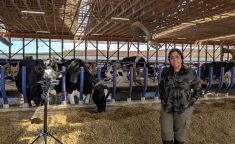Canada’s chicken industry is accusing CBC of selectively using data to conclude that chicken meat in stores often contains bacteria that is resistant to antibiotics.
Chicken Farmers of Canada says the CBC-TV consumer affairs program Marketplacefailed to make a link between so-called superbugs and antibiotic use on farms, despite claiming to do so in a recent broadcast.
“They didn’t make the direct connection, but they let the consumer make the connection that it was a direct result of using antibiotics on the farm,” said Mike Dungate, CFC general manager.
Read Also

Recommendations in the mature assets strategy could cause potential problems for landholders
The Western Stock Growers’ Association urges producers to pay attention to the potential changes to Alberta’s Mature Assets Strategy.
AMarketplaceinvestigation found chicken purchased at major supermarkets across Canada is frequently contaminated with bacteria that many antibiotics cannot destroy. It concluded that overuse of antibiotics on farms could be the reason. The program, which aired Feb. 9, said two-thirds of the 100 chicken meat samples submitted to labs for testing contained bacteria. Those included E. coli, salmonella and campylobacter, which are often found in raw chicken.
It found all the bacteria were resistant to at least one antibiotic. Some were resistant to as many as eight different types.
The program quoted doctors and scientists saying farmers routinely give doses of antibiotics to healthy flocks to prevent disease and make them grow faster.
This could be a human health concern, it concluded.
“If there’s contamination by superbugs, the worry is that consumers could ingest illness-causing bugs that are resistant to much of the available spectrum of traditional antibiotic therapy,” a Marketplace promotional item on the CBC website said.
Preventative use
Dungate acknowledged chicken producers do include low-level “preventative” doses of antibiotics in feed or water to promote good gut health in birds. They also apply antibiotics prescribed by veterinarians to treat specific illnesses in flocks. All drugs used on farms must be approved by Health Canada.
But Dungate questionedMarketplace’s methodology and conclusions. He said some of the antibiotics mentioned were not designed to be used on E. coli and salmonella in chickens, so the fact that those bacteria were resistant to the drugs was moot.
“They found some resistance to drugs that we don’t use.”
Dungate also noted the program found resistant bacteria in some organic chicken and on antibiotic-free farms. As a result, there’s no proven link between resistant bacteria in meat and what chickens eat on farms, he said.
Rick Holley, a University of Manitoba food microbiologist, said the presence of antibiotic-resistant bacteria in food isn’t the most important thing. What’s important is the rate of resistance, he said.
“If the differences are 600-or 700-fold from what you would normally expect, then you might look for artificial causes. That might include a correlation with feeding an antibiotic cocktail to a food animal,” Holley said.
Holley said there are any number of reasons for the presence of antibiotic-resistant bacteria. He has conducted experiments which found resistant bacteria in chicken nuggets and also in poultry feed. But that doesn’t necessarily prove one came from the other, he said.
Dungate said Marketplace failed to mention CFC actively works to reduce antibiotic use. The agency is co-operating with the Canadian Integrated Program for Antimicrobial Resistance Surveillance to perform on-farm surveys of antibiotic usage and resistance levels, starting later this year.














